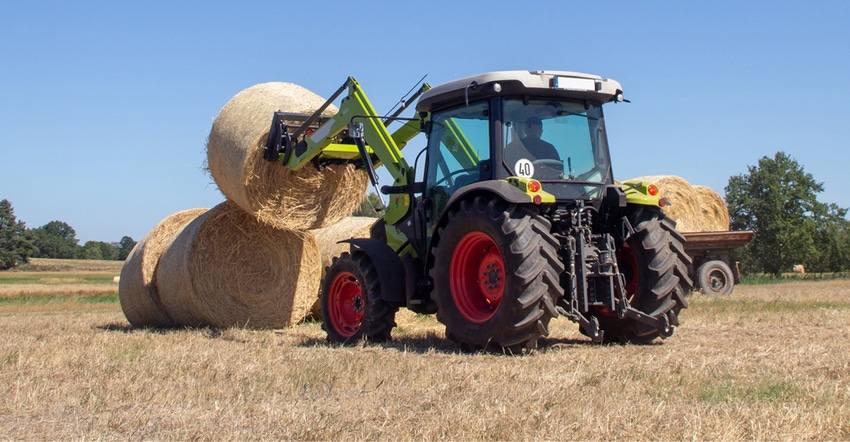April 6, 2020

For a cow-calf enterprise, the second-largest expense after grazed and harvested feed often is overhead expenses related to labor and equipment. In ranching, an overhead expense is one that doesn't change much based on the number of cows that are in production.
For example, the pickup, tractor, ATV, trailer, feeding equipment and working facilities used to care for 150 cows also would likely be adequate to care for 500 cows. On a cost-per-cow-unit basis, spreading that equipment cost over 500 cows versus 150 cows drastically reduces the equipment cost per cow. This is commonly referred to as economies of scale.
Equipment expense is one that frequently seems to creep up for many ranch operations over time. The cost of equipment today in relation to the value of production from cattle that it is used to care for can be staggering.
Harlan Hughes, an agricultural economist and professor emeritus at North Dakota State University, talks about understanding the real cost of equipment using the acronym DIRTI:
Depreciation. Equipment varies in its depreciation amount annually, but 10% of purchase price is a good estimate to use in calculating this expense.
Interest. Interest expense is the cost of interest for money borrowed on the equipment. For those owning the equipment outright, they also should consider the value of their capital investment in the equipment. Do they expect a return on that investment?
Repairs. Repairs are the annual expense related to maintenance and upkeep of a piece of equipment and often are about 2% to 3% of equipment value annually. For older equipment, depreciation expenses are less, but repairs as a percent of a piece of equipment's value drastically increase.
Taxes or licensing. Many states don't charge property tax on equipment, but for states that do and for vehicles that are licensed, using 0.5% to 1% of equipment value is an estimate.
Insurance. Annual insurance for equipment frequently is from 0.5% to 1% of the equipment's value.
The total DIRTI factor for equipment, including all costs with interest, is about 18% to 20% of equipment value. Depreciation is not a cash cost, but it is a real expense. Value is leaving the business as the piece of equipment depreciates. If the business is to continue, that piece of equipment at some point in the future will need to be replaced.
An exercise that can be eye-opening for many ranch owners is to total up their equipment inventory and look at the capital investment, as well as annual ownership costs, involved in having that equipment.
Breaking out the equipment used by enterprise on the ranch to be able to specifically examine equipment costs committed to cow-calf production can provide understanding as to where costs are occurring. For many ranchers, the equipment costs for cow-calf production, when evaluated on a per-cow-unit basis is a big expense. It also is one where there is often an opportunity to reduce costs.
Here are five questions that can be helpful to ask when evaluating equipment used in cow-calf production.
1. Is this piece of equipment truly needed, or is it nice to have? What is the cost of "nice to have"?
2. If unneeded equipment were sold today, how could the money from the sale of that equipment be used to strengthen and build the business?
3. How could the cow-calf production system be changed in a way that could reduce or eliminate the need for equipment currently being used?
4. Has equipment technology changed so one piece of equipment could replace what two or more pieces of equipment are currently being used for?
5. If the equipment is used rarely or infrequently, could it be hired, rented or shared with another owner?
The technological advances of equipment today can make them extremely nice to have. However, the cost associated with owning equipment is significant and should prompt ranch managers to ask themselves if that equipment is truly needed.
Taking time to evaluate equipment expense directly related to the cow-calf enterprise can provide insights into where there may be opportunities to make changes that can improve profitability.
Berger is a Nebraska Extension beef educator.
Source: UNL BeefWatch, which is solely responsible for the information provided and is wholly owned by the source. Informa Business Media and all its subsidiaries are not responsible for any of the content contained in this information asset.
About the Author(s)
You May Also Like




